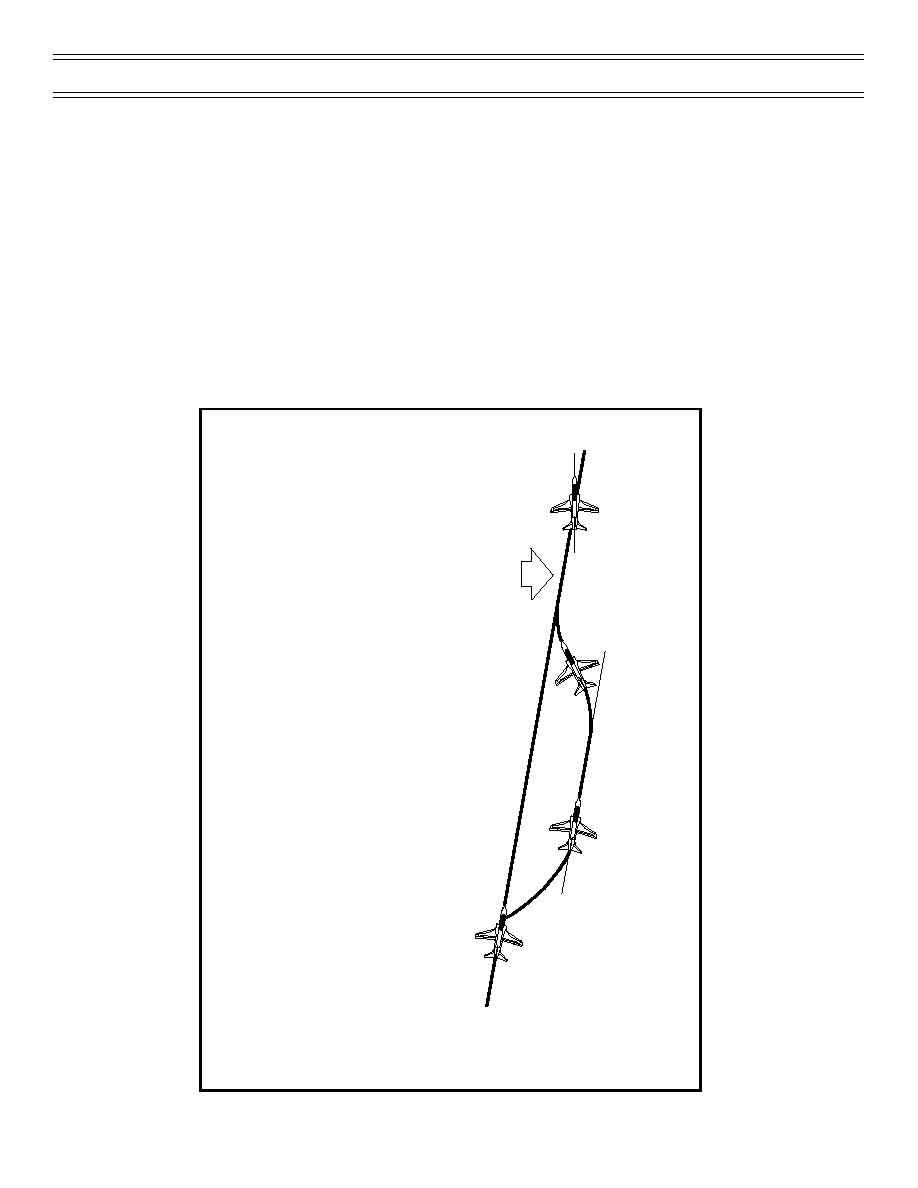
Instrument Flight
Flight Procedures
WIND DRIFT CORRECTION
Determining wind corrected heading (WCH), is the technique you will use to compensate for crosswinds
when maintaining a course on a radial. To compensate for wind, use a WCH that stops drift from your
course. The difference between WCH and desired course is called “crab angle.” (Figure 17).
To determine a WCH, first establish the aircraft on a radial tracking on course, CDI centered, inbound or
outbound from a station. While maintaining a constant heading, check for an indication of drift on your
CDI. If a drift from course is observed, turn the aircraft sufficiently to correct for the effect of the wind and
reintercept the course, (CDI centered). Once established on course, reduce the intercept heading used to
correct back to course while leaving a crab angle into the wind to maintain your course. Continuously
monitor the CDI to ensure that you are maintaining the desired course. The amount of crab angle required
will vary with wind strength and direction, so you’ll have to experiment until you find the best WCH for the
course being tracked.
D.
WIND
A.
Aircraft on course
C.
and on heading
B.
Aircraft drifts off course
while remaining on heading
C.
Heading changed to
reintercept course
D.
Heading adjusted into wind
to keep CDI centered
B.
A.
Figure 17: WIND DRIFT CORRECTION
Page 68
(12-00) Original



 Previous Page
Previous Page
